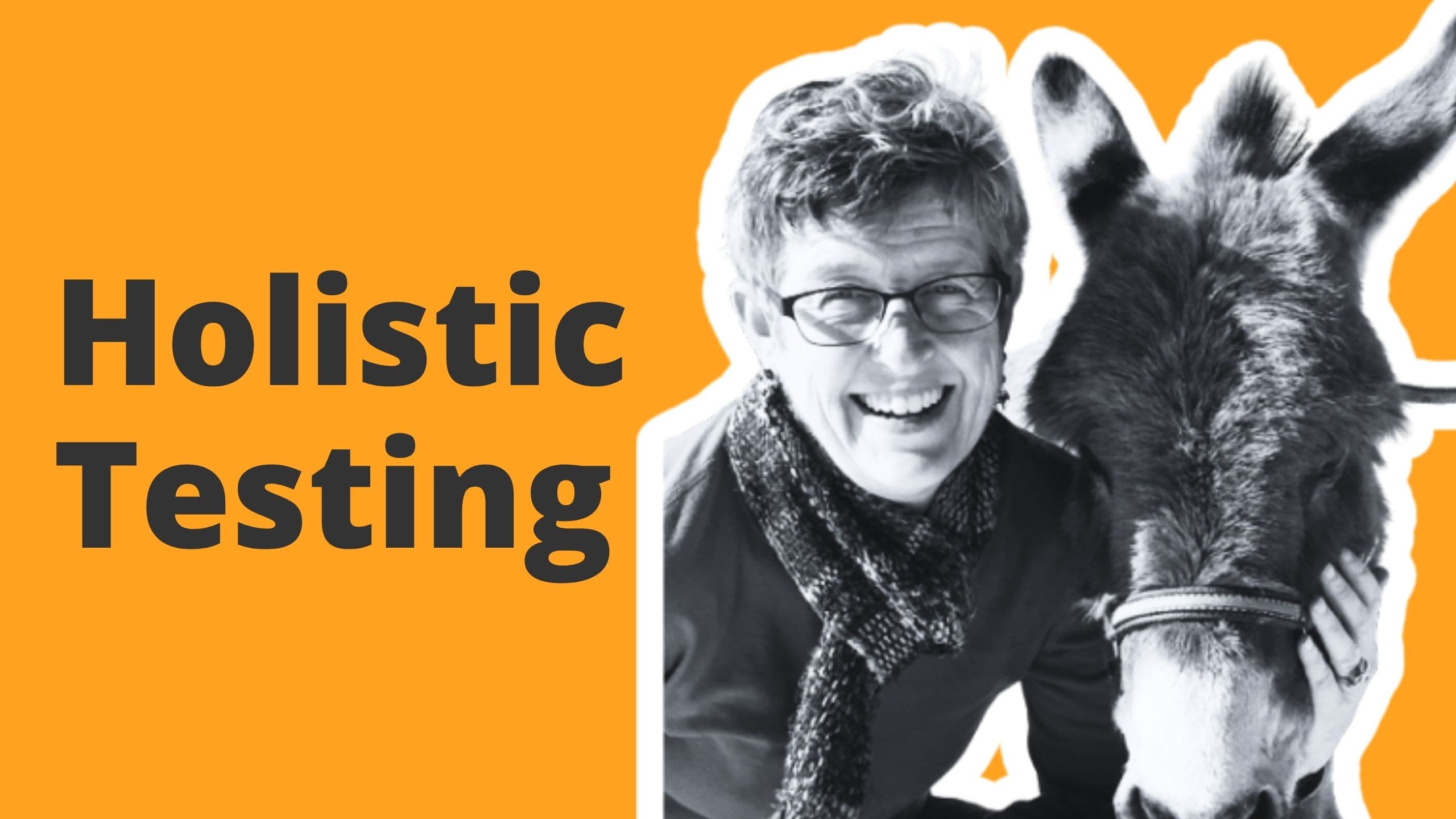Increase Team Autonomy
Team culture and psychological safety are highlighted as crucial drivers for effective collaboration and problem-solving in software development....

Holistic testing moves beyond the traditional boundaries of software quality assurance by embedding testing activities throughout the entire software development life cycle. This approach emphasizes the collective responsibility of the whole team, prioritizing ongoing risk assessment, shared understanding, and proactive collaboration across roles. Practical strategies include engaging with stakeholders early, considering both internal and external quality attributes, and using visual tools like mind maps for collaborative planning. By integrating quality practices from discovery through production and actively learning from user feedback, teams can achieve more resilient software and a culture where quality is a shared pursuit rather than an afterthought.
In this episode, I talk to Lisa Crispin about holistic testing and what it really means for teams striving for better software quality. Lisa brings her experience to the conversation, sharing how testing is much more than a stage or a checklist - it’s a mindset that weaves through every part of the development process. We dig into the practical side: how teams can focus on both internal and external quality, the value of strong relationships, and the power of good questions. It’s clear: true quality comes from collaboration and curiosity, not just tools or process. There’s a lot for teams to rethink here.
"I've seen so many times when we put something on a whiteboard, whether it's physical or virtual, it triggers an idea in somebody like, oh, I just thought of this thing that's going to save us, you know, 180% of our time." - Lisa Crispin
Lisa Crispin is a consultant, author and speaker based in Vermont, USA. She and Janet Gregory have co-authored four books, most recently Holistic Testing: Weave Quality Into Your Product. They have also developed two courses taught by training providers around the world.
Holistic Testing is an important concept in Agile Testing and Quality Assurance. It takes a comprehensive approach by incorporating testing activities at every stage of the software development life cycle.
In this article, we will discuss why Holistic Testing is significant. We will highlight its collaborative nature, which involves the entire team in maintaining quality. The key idea is to have continuous testing practices from beginning to end, following Agile principles for efficient and effective software development.
Discover how Holistic Testing can improve your team's testing efforts and elevate the overall quality of your product.
Holistic Testing is based on the Whole Team Approach, where everyone shares the responsibility for quality assurance. Every team member—developers, testers, product owners, designers, and even marketing professionals—actively participates in ensuring the product meets high standards. This collective ownership shifts testing from being a separate phase to an integrated, continuous activity throughout the development process.
This collaborative environment encourages teams to catch defects sooner, reduce rework, and align the product more closely with customer needs. The synergy created through constant interaction enables better decision-making and supports continuous improvement in testing activities.
Active participation from everyone means testing is not just about finding bugs but about building quality into the product from idea conception to delivery. This mindset helps prevent issues rather than just reacting to them later.
In the software development life cycle, integrating testing activities at each stage is essential for ensuring quality and identifying bugs early on. By incorporating testing throughout the development process, teams can address issues promptly, leading to more efficient workflows and higher-quality end products. This proactive approach can significantly reduce the time and resources needed for bug fixes later in the cycle.
Moreover, fostering a continuous improvement mindset in testing is key to enhancing overall testing processes. By reflecting on past experiences, teams can learn from successes and failures, implementing best practices and refining strategies for future projects. This iterative approach not only improves the quality of testing but also contributes to the overall growth and effectiveness of the team's testing capabilities.
In the Discovery Stage of holistic testing, the focus is on validating business ideas by aligning them with previous successful endeavors. This process ensures that new products or features are in line with customer expectations and market demands. By assessing the compatibility of business ideas with past work, teams can increase the likelihood of delivering valuable solutions that meet customer needs efficiently.
During the Planning Stage, it is essential to prioritize features based on their significance to customers and alignment with business goals. Teams need to collaborate closely to identify the most critical functionalities that will add value to end-users. Additionally, choosing appropriate quality attributes and conducting risk analysis are vital steps in ensuring that testing efforts focus on areas that matter most for product success. This stage sets the foundation for a strategic approach to holistic testing, aligning testing activities with business priorities and customer expectations effectively.
In the building/testing stage of software development, it is crucial to focus on activities that ensure effective quality assurance. Two key practices that can significantly improve the testing process are code instrumentation and exploratory testing.
Code instrumentation involves embedding code within the software to monitor its behavior during testing phases. This technique allows developers and testers to gather valuable data on how the system functions under different conditions, helping identify potential issues and areas for improvement.
During the testing phase, teams can implement code instrumentation techniques to gain insights into:
By leveraging code instrumentation, teams can proactively address potential defects before they escalate into larger issues during later stages of development.
Exploratory testing involves simultaneous learning, test design, and execution, allowing testers to creatively explore the software without predefined scripts. It complements automated testing by executing repetitive tasks efficiently, freeing up time for testers to focus on more complex scenarios and edge cases.
In addition to automated test execution, teams should also allocate time for exploratory testing sessions. During these sessions, testers can:
By incorporating exploratory testing into the building/testing stage, teams can achieve comprehensive test coverage and uncover defects that may have been missed by automated tests alone.
By combining these approaches in the building/testing stage, teams can enhance the overall quality of their software products and proactively address potential defects before they escalate into larger issues during later stages of development.
Holistic testing brings Environment Overload Issues that can hinder critical thinking during test execution. When test environments are cluttered with numerous simultaneous demands, testers struggle to focus on identifying meaningful problems. This overload often leads to missed defects and reduced testing effectiveness.
Prioritization Challenges also emerge, especially when balancing production pressures with thorough quality assurance. Teams may face conflicting demands between quick releases and comprehensive testing coverage.
Addressing these challenges requires deliberate strategies:
These approaches help maintain clarity and effectiveness in holistic testing despite complex operational pressures.
AI tools offer promising enhancements to holistic testing by automating repetitive tasks and providing deeper insights into system behavior. You can leverage AI for:
Implementing AI within holistic testing frameworks presents challenges worth noting:
Addressing these hurdles requires a thoughtful approach where teams experiment with small, controlled AI deployments. Emphasize collaboration between testers, developers, and operations specialists to build trust in AI outputs. Continuous learning about AI’s capabilities and limitations helps align it with the holistic testing mindset of shared understanding and quality focus.

Team culture and psychological safety are highlighted as crucial drivers for effective collaboration and problem-solving in software development....

Context shapes every aspect of software testing, yet its dynamic nature often requires testers to operate with humility, curiosity, and a willingness...

Nonviolent communication in tech teams enhances team dynamics. With its four components - observations, feelings, needs, and requests - this approach...